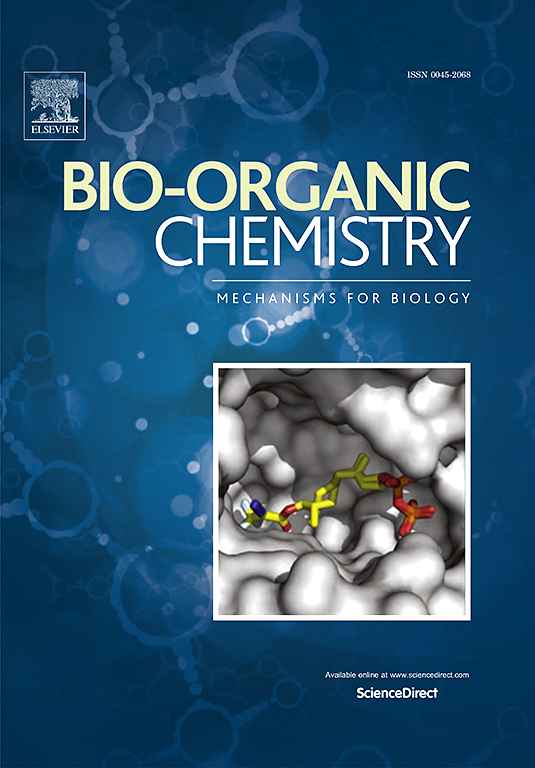Discovery of 6-amino pyridine clubbed heterocycles as potent dual GSK-3β/CK-1δ inhibitors for the treatment of Alzheimer's disease
IF 4.5
2区 医学
Q1 BIOCHEMISTRY & MOLECULAR BIOLOGY
引用次数: 0
Abstract
Alzheimer's disease (AD) is a progressive and chronic neurodegenerative disorder progression through various kinases. Glycogen synthase kinase 3β (GSK-3β) and Casein Kinase-1δ (CK-1δ) have gained a lot of attention for its role in tau pathology. Utilizing a multitarget strategy, a series of 6-amino pyridine derivatives were developed as promising dual GSK-3β/CK-1δ inhibitors for the treatment of AD. This study involved the design, synthesis, and evaluation of novel 6-amino pyridine derivatives as dual GSK-3β/CK-1δ inhibitors exhibiting excellent biological activities. The in-vitro results indicated that most of compounds displayed promising activity against GSK-3β/CK-1δ. Among the tested compounds, 8d exhibited strong inhibitory activity against GSK-3β and CK-1δ, with IC₅₀ values of 0.77 ± 0.01 μM and 0.57 ± 0.12 μM, respectively. Notably, compound 8d significantly reduced tau hyperphosphorylated aggregates while demonstrating safety in SH-SY5Y neuroblastoma cell lines. ADME prediction results indicated that compound 8d adhered to Lipinski's rule of five and exhibited potential to permeate the blood-brain barrier (BBB). Molecular docking analysis revealed that this compound fits well within the ATP binding site, forming hydrogen bonds between its 6-amino pyridine ring with key amino acids, including Asp133 and Val135 in the hinge region of GSK-3β, as well as Leu85 of CK-1δ. These findings indicate that 6-amino pyridine derivatives have the potential to be effective dual-target candidates for AD.

求助全文
约1分钟内获得全文
求助全文
来源期刊

Bioorganic Chemistry
生物-生化与分子生物学
CiteScore
9.70
自引率
3.90%
发文量
679
审稿时长
31 days
期刊介绍:
Bioorganic Chemistry publishes research that addresses biological questions at the molecular level, using organic chemistry and principles of physical organic chemistry. The scope of the journal covers a range of topics at the organic chemistry-biology interface, including: enzyme catalysis, biotransformation and enzyme inhibition; nucleic acids chemistry; medicinal chemistry; natural product chemistry, natural product synthesis and natural product biosynthesis; antimicrobial agents; lipid and peptide chemistry; biophysical chemistry; biological probes; bio-orthogonal chemistry and biomimetic chemistry.
For manuscripts dealing with synthetic bioactive compounds, the Journal requires that the molecular target of the compounds described must be known, and must be demonstrated experimentally in the manuscript. For studies involving natural products, if the molecular target is unknown, some data beyond simple cell-based toxicity studies to provide insight into the mechanism of action is required. Studies supported by molecular docking are welcome, but must be supported by experimental data. The Journal does not consider manuscripts that are purely theoretical or computational in nature.
The Journal publishes regular articles, short communications and reviews. Reviews are normally invited by Editors or Editorial Board members. Authors of unsolicited reviews should first contact an Editor or Editorial Board member to determine whether the proposed article is within the scope of the Journal.
 求助内容:
求助内容: 应助结果提醒方式:
应助结果提醒方式:


